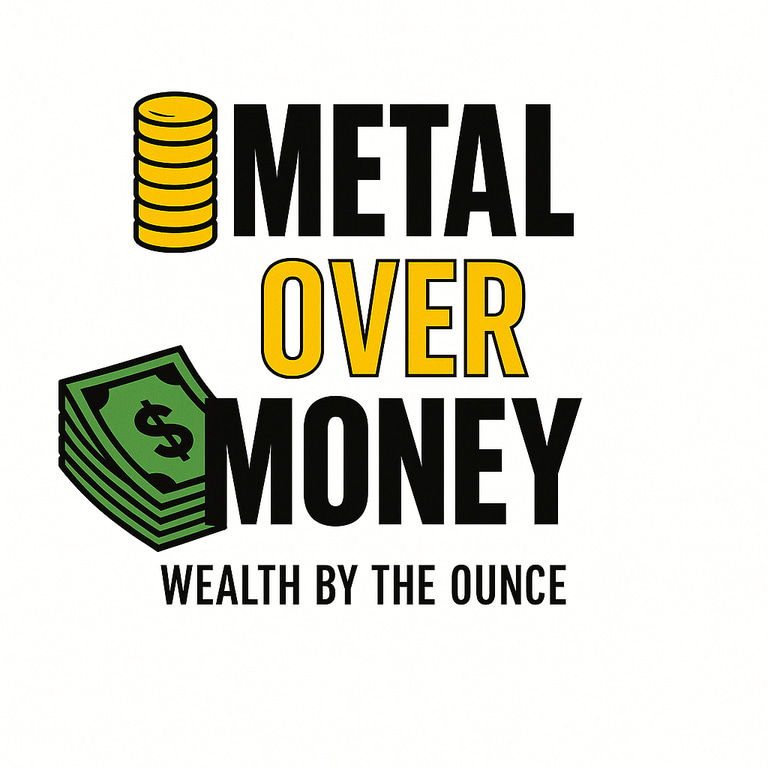The Gold Rush Awakens: Why Precious Metals Are Going Mainstream
Gold and silver are no longer just for hardcore stackers — they’re going mainstream. As more people realize the power of precious metals, a new wave of investors is entering the market. When friends start saying, “I heard gold is a good investment,” it signals the next phase: rising awareness, growing demand, and a potential gold mania ahead. Learn why the smart money is already in position and how consumer attention could send metal prices soaring.
MARKET INSIGHTS
10/14/20254 min read


Keywords: precious metals investing, gold mania, mainstream gold investing
Something is changing in the air — and if you’ve been stacking for a while, you can feel it too.
For years, precious metals were seen as a niche investment — something reserved for old-school savers, doomsday preppers, or financial contrarians. But lately, that’s beginning to shift.
When friends who never used to talk about money start asking, “Hey, isn’t gold a good investment right now?” — that’s the signal. Gold and silver are entering the mainstream conversation.
And when the public finally catches on, the quiet accumulation phase ends — and the gold mania begins.
The Early Signs of a Shift
It happened recently: a close friend of mine — someone who’s always been focused on stocks and tech — said,
“I heard gold is a good investment now.”
That one sentence told me everything. It’s not just stackers and financial YouTubers talking about metals anymore — it’s everyday people. That’s how major market trends begin.
Historically, by the time the average consumer starts getting curious, the smart money — institutions, hedge funds, and central banks — are already deeply positioned. They’ve been buying quietly while everyone else was distracted.
Now, as awareness spreads, retail investors (regular consumers) will likely pile in. And when they do, demand can outstrip supply almost overnight — sending prices soaring.
That’s the cycle we’ve seen again and again throughout financial history.
From Niche to Mainstream
For decades, gold and silver were considered “alternative assets.” You’d see them in old commercials, financial newsletters, or tucked away in survivalist blogs. But since 2020, that’s changed dramatically:
Central banks have been buying gold at record levels — their largest accumulation streak in over 50 years.
Younger investors are diversifying into silver, gold, and even copper, seeing metals as a counterbalance to volatile crypto and overvalued stocks.
Mainstream media outlets now regularly discuss gold’s performance alongside traditional equities and bonds.
When a once-ignored asset class begins showing up in everyday conversations, news feeds, and podcasts, it’s a sign the tide is turning.
Metals are no longer “alternative.” They’re becoming essential.
Smart Money Moves First
Markets move in phases.
Smart Money Phase: Institutional investors, insiders, and central banks accumulate quietly when prices are low and sentiment is weak.
Early Adopter Phase: Knowledgeable retail investors — stackers, collectors, and metal enthusiasts — buy consistently, building strong hands before the crowd arrives.
Public Participation Phase: The mainstream investor wakes up. Gold hits headlines. Silver trends on social media. Prices climb fast.
We’re right between phase two and three.
The smart money is already in position — quietly accumulating bullion, mining stocks, and ETFs. And now, average consumers are beginning to notice.
That combination is powerful. Once new buyers flood in, demand could spike faster than mints and refiners can supply.
This is how gold manias are born.
Why Awareness Drives Price
The metals market is much smaller than people realize. The global stock market is worth over $100 trillion, but the entire above-ground gold supply (ever mined) is valued around $15 trillion — and only a fraction of that is available for trade.
So when new money flows in, it can move prices dramatically.
Think about it: if even 1% of global investors decide they want physical gold or silver, that’s billions in new demand chasing a limited supply.
As awareness spreads and people seek protection from inflation, debt, and market uncertainty, metals naturally reprice higher to reflect their true scarcity.
In other words, the more people catch on, the higher it goes.
The Psychology of the Coming Mania
Every major gold bull run starts quietly.
In the 1970s, gold rose from $35 to over $800 as people realized inflation wasn’t “transitory.”
In the 2000s, gold climbed from $250 to $1,900 after the financial crisis shattered trust in the banking system.
Now, in the 2020s, the conditions rhyme:
Record national debt
Inflationary pressure
Currency devaluation
Geopolitical tension
Add to that social media’s viral power — where one influencer or financial voice can trigger millions of people to start researching metals — and you have the recipe for a new digital gold rush.
When the Crowd Arrives, It’s Too Late
The irony of investing is that the best time to buy is when no one’s talking about it.
By the time your neighbor, coworker, or favorite podcaster starts discussing gold and silver, it means the train has already left the station — or at least started to move.
That’s why stackers have always preached:
“Stack before the panic, not after.”
Those already holding metal won’t need to rush to buy when prices start climbing — they’ll simply watch their purchasing power strengthen.
Precious Metals Are Reclaiming Their Role
The world is rediscovering what ancient civilizations already knew: gold and silver are real money.
They don’t depend on a central bank, a blockchain, or an app. They just are — tangible, finite, and timeless.
So when someone casually says, “I heard gold is a good investment,” it’s not just small talk. It’s the whisper before the roar — the early sign that people are waking up to the reality of value.
The gold mania may not be full-blown yet, but the spark has been lit. And those who saw it coming — who stacked when it was quiet — will be in the best position when the crowd rushes in.
When friends start asking about gold, it’s often a signal — one we unpack further in The Great Depression 2.0: When the Dollar Sneezes, the World Catches a Cold
Rising awareness of gold investing often signals a shift in public sentiment — something we also explored in Why Precious Metals Still Matter in 2025.
If you’re looking for an affordable way to join the movement, The Case for Copper Stacking: The People’s Metal of the Future is a great place to start
Disclaimer
This article is for educational and informational purposes only. It does not constitute financial advice. Investing in precious metals carries risk and should be based on individual research or consultation with a licensed financial advisor.
Disclaimer
The content shared on Metal Not Money represents personal opinions and experiences based on independent research and a passion for precious metals. It is not financial, legal, or investment advice.
Always do your own due diligence and consult with a qualified financial professional before making any investment decisions.
info@metalovermoney.com
© 2025. All rights reserved.
